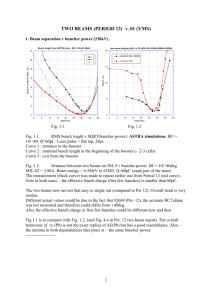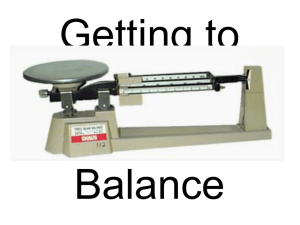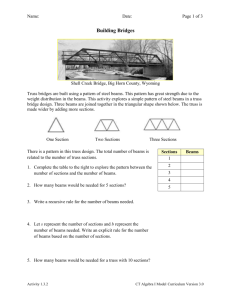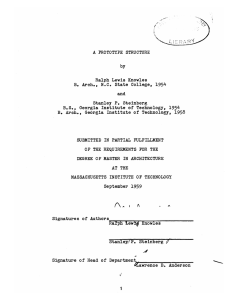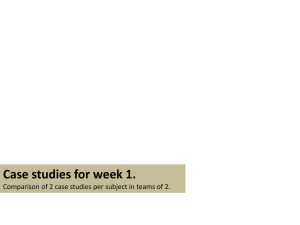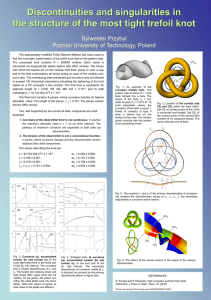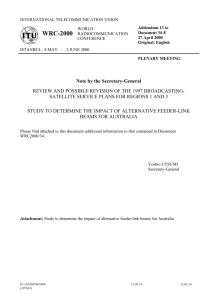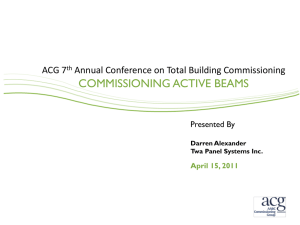poster
advertisement
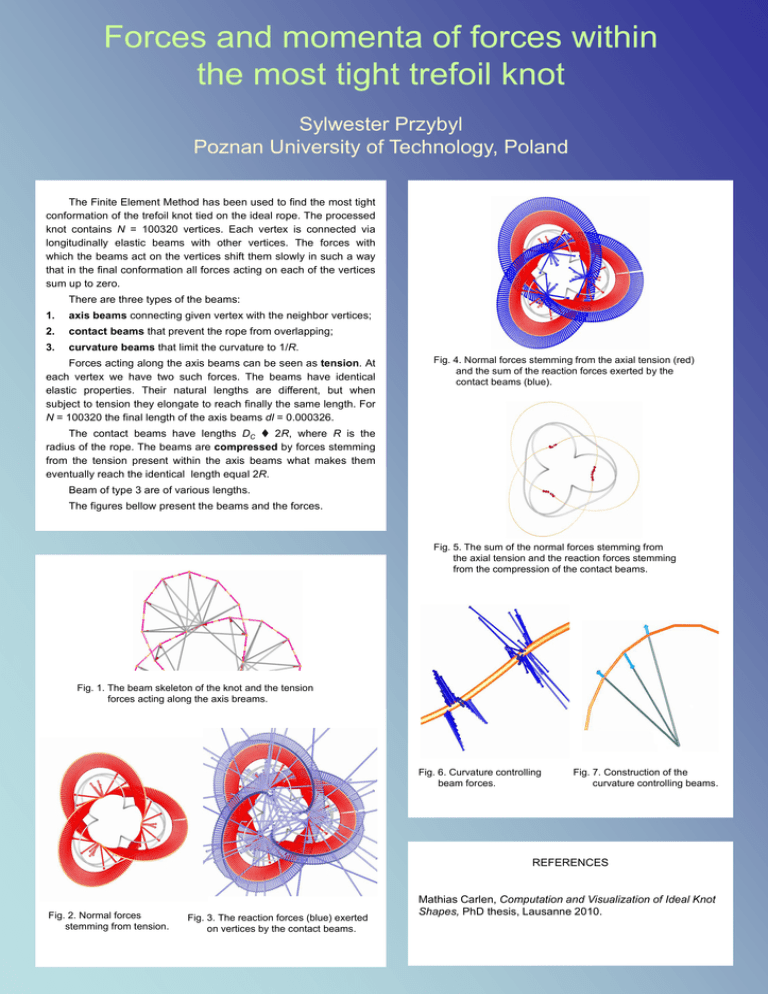
Forces and momenta of forces within the most tight trefoil knot Sylwester Przybyl Poznan University of Technology, Poland The Finite Element Method has been used to find the most tight conformation of the trefoil knot tied on the ideal rope. The processed knot contains N = 100320 vertices. Each vertex is connected via longitudinally elastic beams with other vertices. The forces with which the beams act on the vertices shift them slowly in such a way that in the final conformation all forces acting on each of the vertices sum up to zero. There are three types of the beams: 1. axis beams connecting given vertex with the neighbor vertices; 2. contact beams that prevent the rope from overlapping; 3. curvature beams that limit the curvature to 1/R. Forces acting along the axis beams can be seen as tension. At each vertex we have two such forces. The beams have identical elastic properties. Their natural lengths are different, but when subject to tension they elongate to reach finally the same length. For N = 100320 the final length of the axis beams dl = 0.000326. Fig. 4. Normal forces stemming from the axial tension (red) and the sum of the reaction forces exerted by the contact beams (blue). The contact beams have lengths DC 2R, where R is the radius of the rope. The beams are compressed by forces stemming from the tension present within the axis beams what makes them eventually reach the identical length equal 2R. Beam of type 3 are of various lengths. The figures bellow present the beams and the forces. Fig. 5. The sum of the normal forces stemming from the axial tension and the reaction forces stemming from the compression of the contact beams. Fig. 1. The beam skeleton of the knot and the tension forces acting along the axis breams. Fig. 6. Curvature controlling beam forces. Fig. 7. Construction of the curvature controlling beams. REFERENCES Fig. 2. Normal forces stemming from tension. Fig. 3. The reaction forces (blue) exerted on vertices by the contact beams. Mathias Carlen, Computation and Visualization of Ideal Knot Shapes, PhD thesis, Lausanne 2010.

